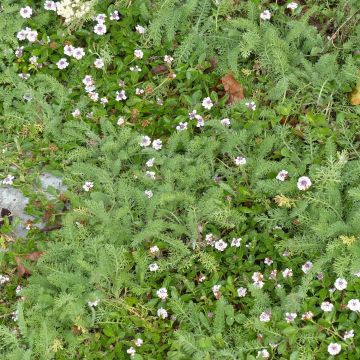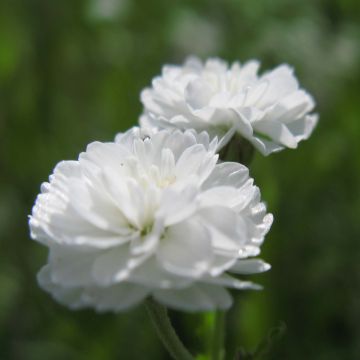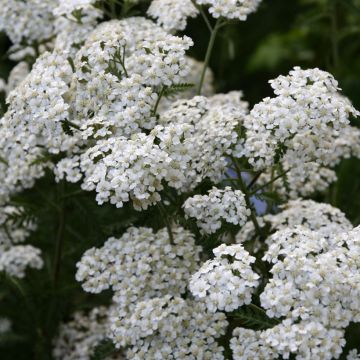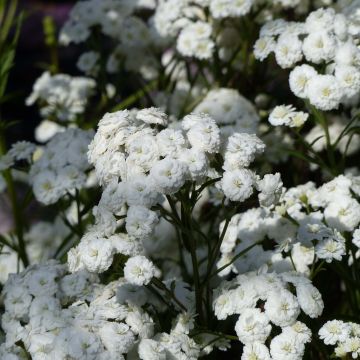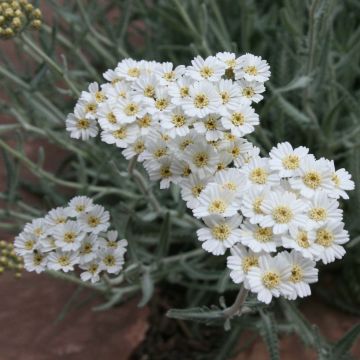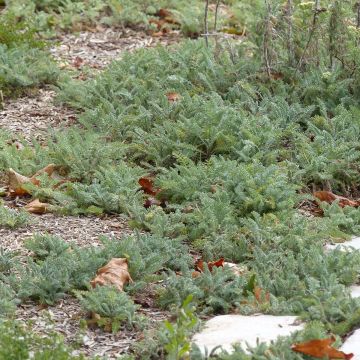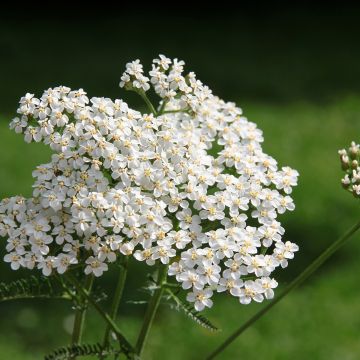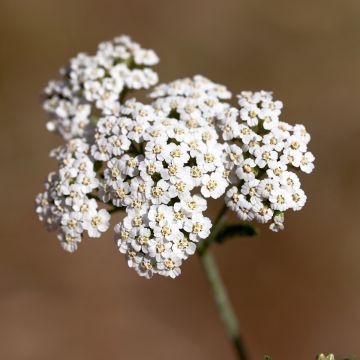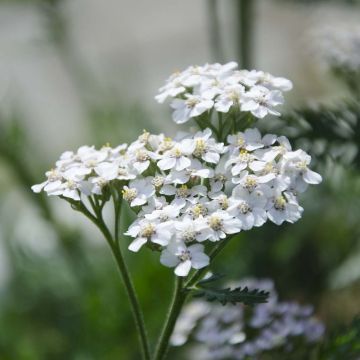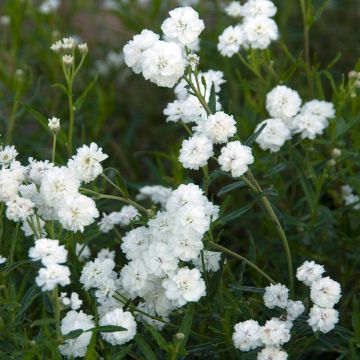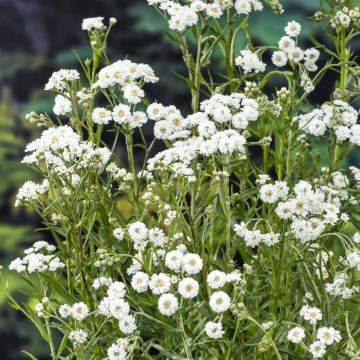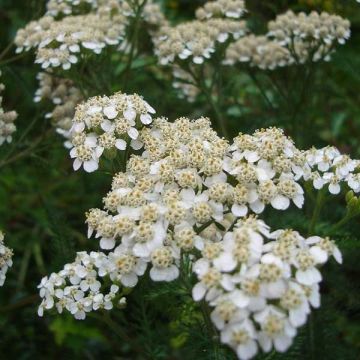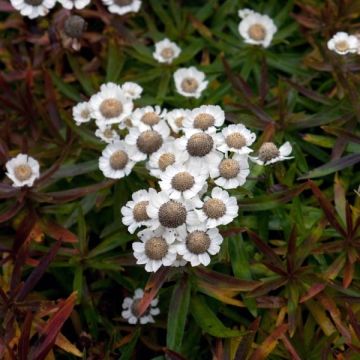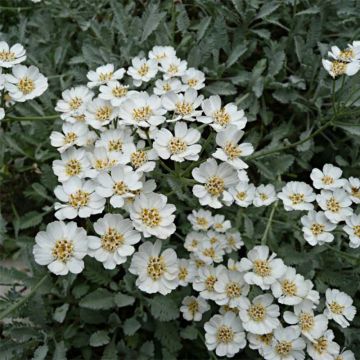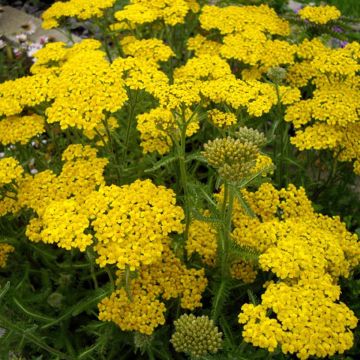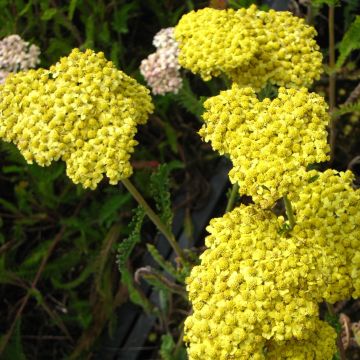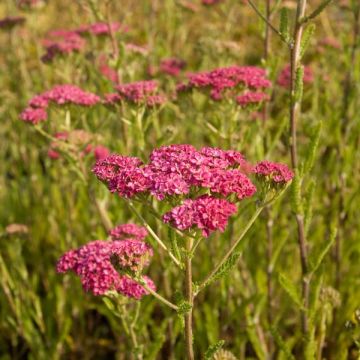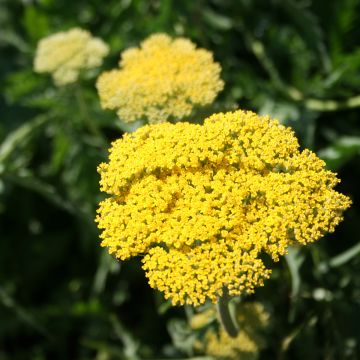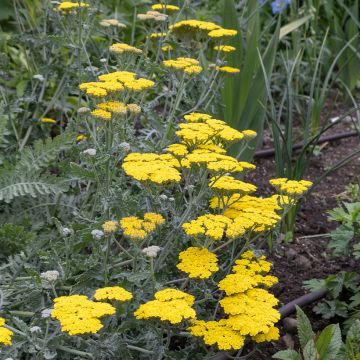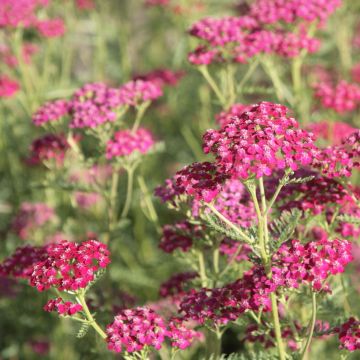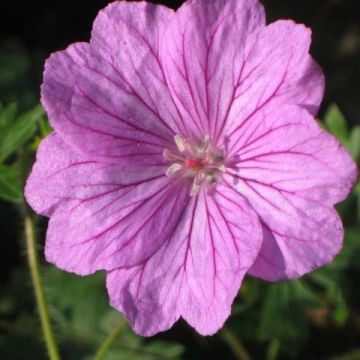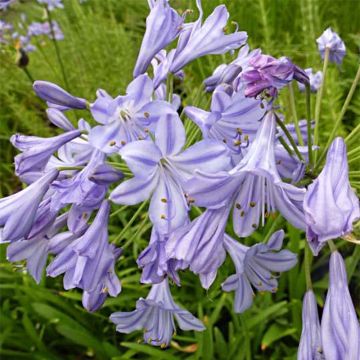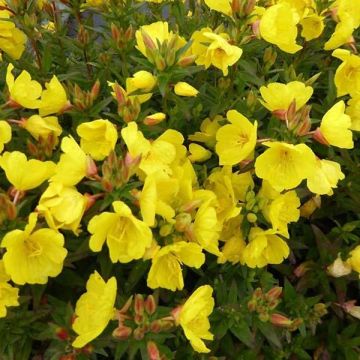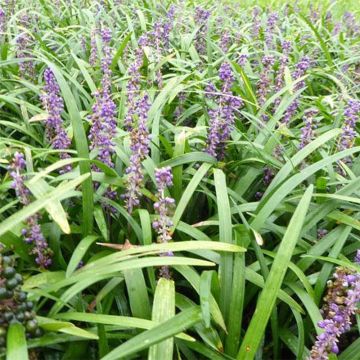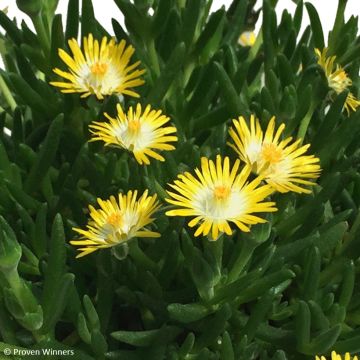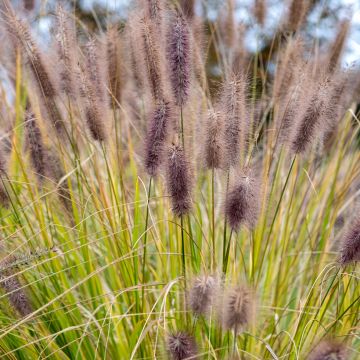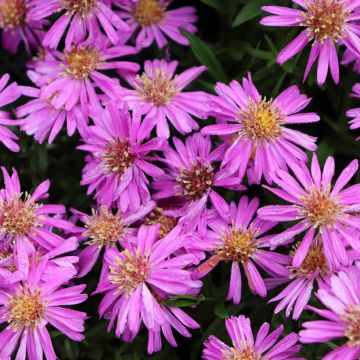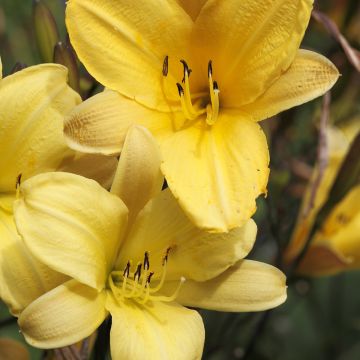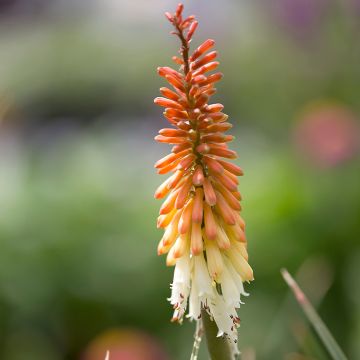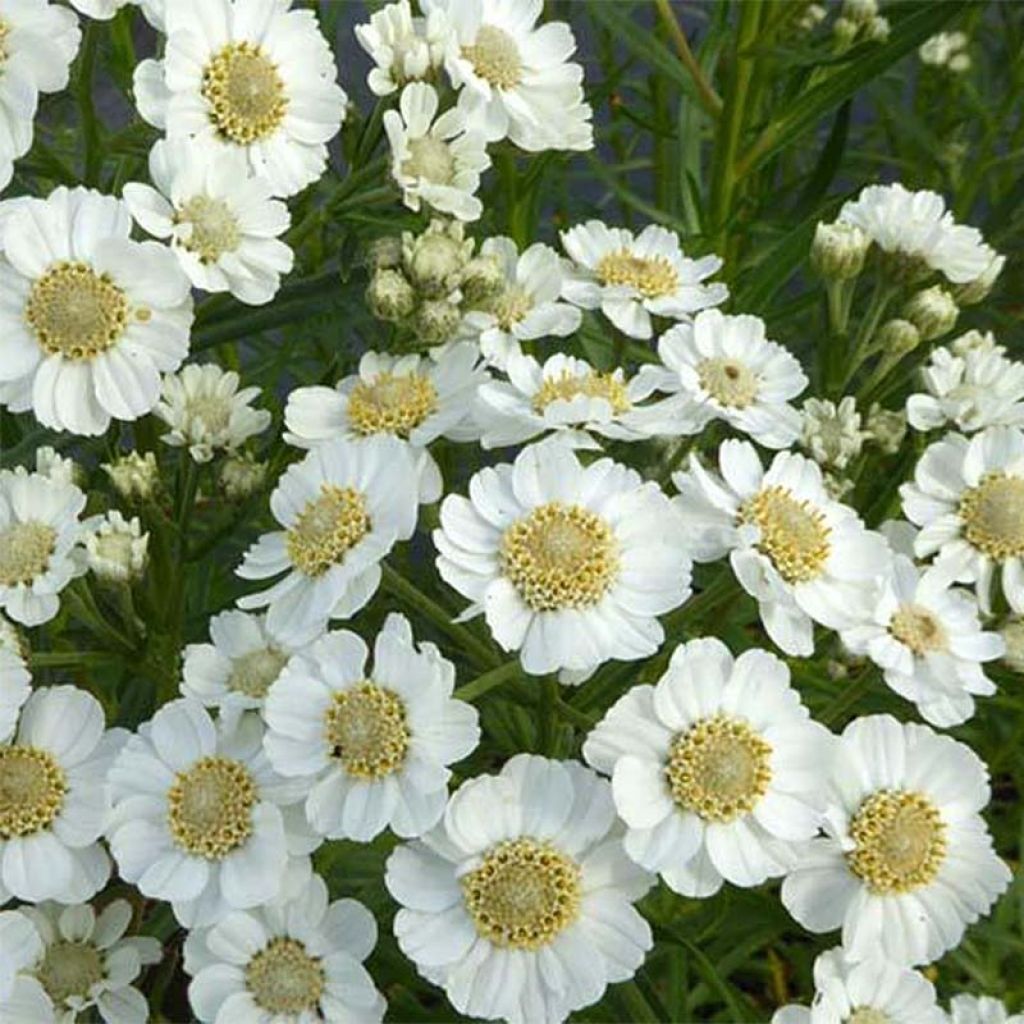

Achillea ptarmica Xana
Achillea ptarmica Xana
Achillea ptarmica Xana
Sneezewort, Bastard Pellitory, European Pellitory, Fair-maid-of-France, Goose Tongue, Sneezeweed, Wild Pellitory, White Tansy
Why not try an alternative variety in stock?
View all →This plant carries a 12 months recovery warranty
More information
We guarantee the quality of our plants for a full growing cycle, and will replace at our expense any plant that fails to recover under normal climatic and planting conditions.
From €5.90 for pickup delivery and €6.90 for home delivery
Express home delivery from €8.90.
Does this plant fit my garden?
Set up your Plantfit profile →
Description
The Achillea ptarmica ‘Xana’, also known as “Sneezewort,” is a cultivar with a low and compact habit. This bushy aromatic plant disappears all summer under clusters of dazzling small white flowers. Hardy, this beautiful perennial, particularly enjoys damp locations. It will brighten up the edge of a water feature. This elegant plant also works wonders in dry or fresh bouquets.
Achillea ptarmica, also known as Sneezewort, is a perennial stoloniferous plant from the Aster family, native to Northern Europe. It grows spontaneously in meadows, marshes, and along watercourses. The ‘Xana’ cultivar has an upright and low clumping habit, reaching about 50 cm (20in) in all directions. The flowering, very abundant, lasts from July to September. White flowers with cream-white centres appear at the tops of the stems, forming flattened or slightly rounded corymbs, highly visited by pollinators. They give rise to fruits called achenes. The stem is channelled and villous. The foliage is deciduous or semi-evergreen, aromatic, and finely dissected into strips. The lanceolate and narrow leaves are dark green. The plant spreads on the surface of the soil through stolons, allowing it to cover large areas.
The Achillea ptarmica ‘Xana’ is a stoloniferous plant that can be used as ground cover on large areas, along the edge of woodlands, or by a water feature. It thrives in full sun or partial shade, in fresh and fertile, well-drained soil but can tolerate dry soils once established. Easy to grow, it will fit well in cottage gardens, naturalistic gardens, simple gardens, borders, flower meadows, or as cut flowers. It will blend in with scabious, iris, or phlox.
Report an error about the product description
Achillea ptarmica Xana in pictures
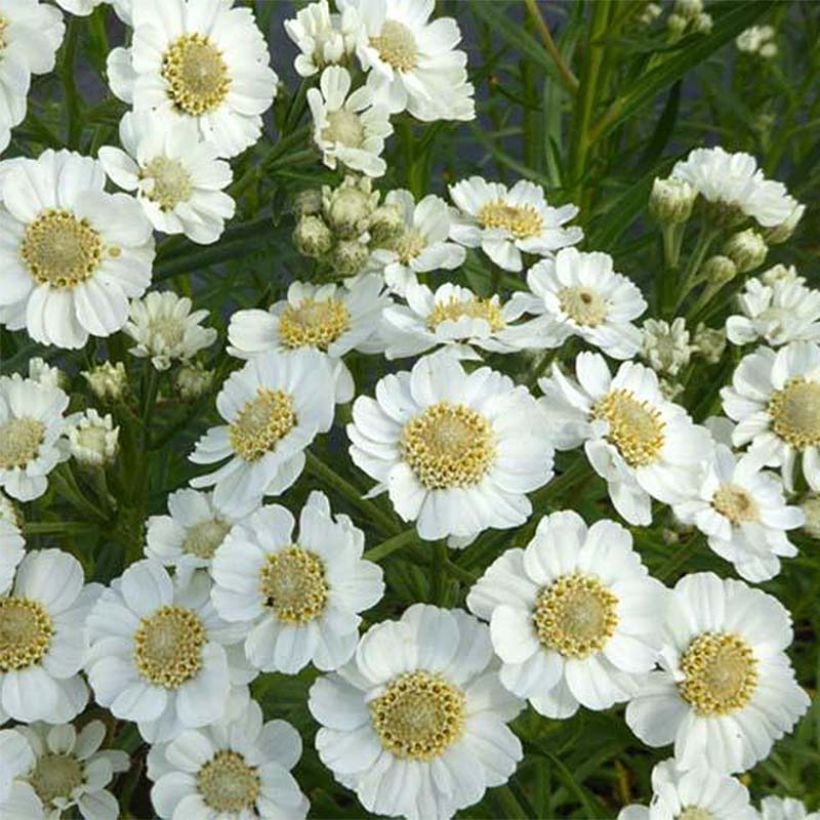

Flowering
Foliage
Plant habit
Botanical data
Achillea
ptarmica
Xana
Asteraceae
Sneezewort, Bastard Pellitory, European Pellitory, Fair-maid-of-France, Goose Tongue, Sneezeweed, Wild Pellitory, White Tansy
Cultivar or hybrid
Other Achillea
Planting and care
Plant 'Xana' ptarmic yarrow in any soil, even limestone, preferably moist to wet, well-drained and humus-bearing. It even adapts to clay soils, if they are healthy and well amended. It will grow in partial shade but prefers full sun. In a cool climate, planting can be done all year round. In areas with hot and dry summers, it is best to plant in September-October so that the plant can establish its roots well during autumn and winter to withstand the following summer. It is advisable to cut back all the vegetation at the end of the season to promote the growth of young shoots in spring.
Planting period
Intended location
Care
-
, onOrder confirmed
Reply from on Promesse de fleurs
Summer flowering perennials
Haven't found what you were looking for?
Hardiness is the lowest winter temperature a plant can endure without suffering serious damage or even dying. However, hardiness is affected by location (a sheltered area, such as a patio), protection (winter cover) and soil type (hardiness is improved by well-drained soil).

Photo Sharing Terms & Conditions
In order to encourage gardeners to interact and share their experiences, Promesse de fleurs offers various media enabling content to be uploaded onto its Site - in particular via the ‘Photo sharing’ module.
The User agrees to refrain from:
- Posting any content that is illegal, prejudicial, insulting, racist, inciteful to hatred, revisionist, contrary to public decency, that infringes on privacy or on the privacy rights of third parties, in particular the publicity rights of persons and goods, intellectual property rights, or the right to privacy.
- Submitting content on behalf of a third party;
- Impersonate the identity of a third party and/or publish any personal information about a third party;
In general, the User undertakes to refrain from any unethical behaviour.
All Content (in particular text, comments, files, images, photos, videos, creative works, etc.), which may be subject to property or intellectual property rights, image or other private rights, shall remain the property of the User, subject to the limited rights granted by the terms of the licence granted by Promesse de fleurs as stated below. Users are at liberty to publish or not to publish such Content on the Site, notably via the ‘Photo Sharing’ facility, and accept that this Content shall be made public and freely accessible, notably on the Internet.
Users further acknowledge, undertake to have ,and guarantee that they hold all necessary rights and permissions to publish such material on the Site, in particular with regard to the legislation in force pertaining to any privacy, property, intellectual property, image, or contractual rights, or rights of any other nature. By publishing such Content on the Site, Users acknowledge accepting full liability as publishers of the Content within the meaning of the law, and grant Promesse de fleurs, free of charge, an inclusive, worldwide licence for the said Content for the entire duration of its publication, including all reproduction, representation, up/downloading, displaying, performing, transmission, and storage rights.
Users also grant permission for their name to be linked to the Content and accept that this link may not always be made available.
By engaging in posting material, Users consent to their Content becoming automatically accessible on the Internet, in particular on other sites and/or blogs and/or web pages of the Promesse de fleurs site, including in particular social pages and the Promesse de fleurs catalogue.
Users may secure the removal of entrusted content free of charge by issuing a simple request via our contact form.
The flowering period indicated on our website applies to countries and regions located in USDA zone 8 (France, the United Kingdom, Ireland, the Netherlands, etc.)
It will vary according to where you live:
- In zones 9 to 10 (Italy, Spain, Greece, etc.), flowering will occur about 2 to 4 weeks earlier.
- In zones 6 to 7 (Germany, Poland, Slovenia, and lower mountainous regions), flowering will be delayed by 2 to 3 weeks.
- In zone 5 (Central Europe, Scandinavia), blooming will be delayed by 3 to 5 weeks.
In temperate climates, pruning of spring-flowering shrubs (forsythia, spireas, etc.) should be done just after flowering.
Pruning of summer-flowering shrubs (Indian Lilac, Perovskia, etc.) can be done in winter or spring.
In cold regions as well as with frost-sensitive plants, avoid pruning too early when severe frosts may still occur.
The planting period indicated on our website applies to countries and regions located in USDA zone 8 (France, United Kingdom, Ireland, Netherlands).
It will vary according to where you live:
- In Mediterranean zones (Marseille, Madrid, Milan, etc.), autumn and winter are the best planting periods.
- In continental zones (Strasbourg, Munich, Vienna, etc.), delay planting by 2 to 3 weeks in spring and bring it forward by 2 to 4 weeks in autumn.
- In mountainous regions (the Alps, Pyrenees, Carpathians, etc.), it is best to plant in late spring (May-June) or late summer (August-September).
The harvesting period indicated on our website applies to countries and regions in USDA zone 8 (France, England, Ireland, the Netherlands).
In colder areas (Scandinavia, Poland, Austria...) fruit and vegetable harvests are likely to be delayed by 3-4 weeks.
In warmer areas (Italy, Spain, Greece, etc.), harvesting will probably take place earlier, depending on weather conditions.
The sowing periods indicated on our website apply to countries and regions within USDA Zone 8 (France, UK, Ireland, Netherlands).
In colder areas (Scandinavia, Poland, Austria...), delay any outdoor sowing by 3-4 weeks, or sow under glass.
In warmer climes (Italy, Spain, Greece, etc.), bring outdoor sowing forward by a few weeks.

































